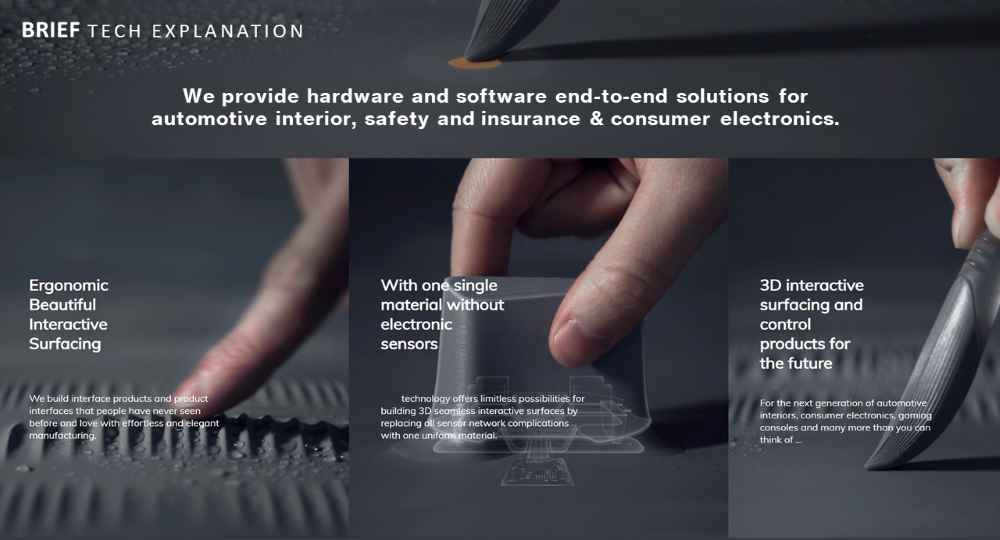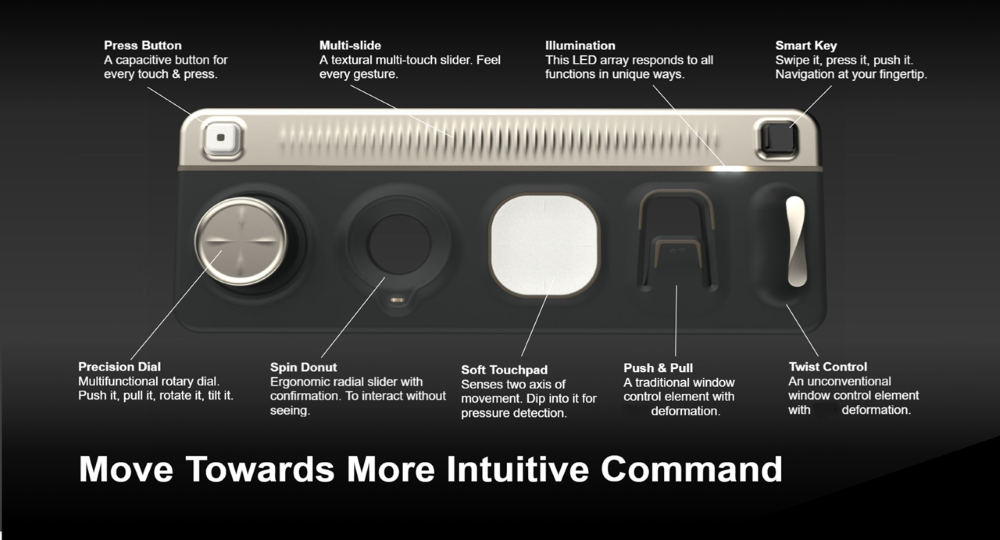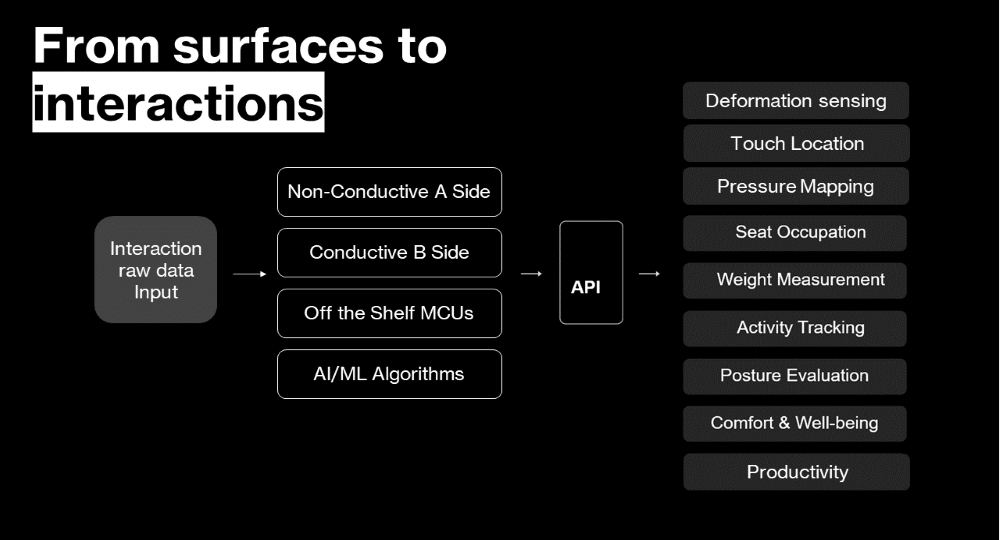Technologies
Discover, Connect & Collaborate at TECHINNOVATION 2021
Touch Sensing – Software Enabled Surfaces
Technology Overview
This technology offer is a novel method of touch sensing, which relies on incorporating conductive material within polymers and injection molded plastic components. Touch location, gestures and pressure are then interpreted via signal processing and machine learning. Unlike other touch sensing methodologies, multiple discrete electronic sensors are not needed:
- Seamless touch surfaces : allow direct integration of touch sensing features with any type of industrial materials (ABS, TPU, TPE, PC, Silicones). Detectable interactions include: touch, pressure and gesture detection as well as complex gestural interactions such as pulling, pushing, squeezing and twisting.
This unique method of touch sensing relies on molding a conductive material’s surface profile (which can be a separate conductive layer) and internal structures to regulate electrical signal behavior so that a computer can detect touch location, speed and pressure from a single 3D electrode. This is fundamentally different from existing matrix-based sensor methods.
Technology Features, Specifications and Advantages
The patented molded-material sensors allow manufacturers to fully customise controller’s 3D shape to be ergonomic and intuitive, and allow customers to operate the controls intuitively and without visual distraction.
Competitive Advantages :
- Create sensors with industrial grade molded plastic materials, allowing manufacturers to have full customisation control over the design and styling
- Reduce 2/3 of the assembling process cost by eliminating the need for printed metallic discrete sensor networks.
- Produce 3D seamless surfaces that are waterproof, durable, and that offer more intuitive operation
Underpinning the smart polymer technology are proprietary algorithms and machine learning software methods, which use interaction-specific algorithm libraries accumulated over 5 years. The shaped materials with uniform conductivity yield complex signals when subject to touch and pressure – these are converted into high-level APIs (application programming interfaces) for integration into useful devices. Much of the know-how in this technology thus resides in the software, and its interface with the shape of the molded, conductive plastic. Optimizing material composition, electrical connections and controlling shrink-rate are also key to successfully implementing the technology. By using software so extensively, and gradually improving gesture recognition via machine learning, this approach is able to determine a wide range of metrics that go beyond simple touch/pressure recognition.
A key selling point to manufacturers is the potential for cost reductions, facilitated by the simpler design with only simple mechanical connections between the microprocessor to a single piece of touch/pressure sensitive material (which can be made using existing injection molding capability).
Potential Applications
There are many possible use cases for this technology. These include computer/console controllers, automotive human machine interface (HMI) (door handles, seat controllers) fitness equipment, wearables, smart home devices, personal electronics (shavers, toothbrushes).
Relevant addressable markets include:
Automotive Interiors Market: $423B in 2027, estimated 6.1% CAGR 2020-2027. Total Addressable Market: 1% - $42.3B.
Gaming Accessories Market: $6B in 2024, estimated 9% CAGR 2020-2024. Total Addressable Market: 10% - $600M.
Virtual Reality Market size value in 2021 of $21.83B, revenue forecast in 2028 of $69.60B. Growth Rate CAGR of 18.0% from 2021 to 2028.
Healthcare, Fitness & Wearables: $62B in 2023, estimated 19% CAGR 2017-2023 Total Addressable Market: 1% - $620M.
Wearables: Valued at $27.9B in 2019, with expected growth of $74.03B by 2025.
The technology owner runs a B2B business model. The model is based on establishing joint development partnerships (JDP) with leading suppliers and companies in automotive, gaming, wearables, consumer electronics and fitness market. There are two potential routes for production: licensing the technology directly to the technology collaborator (who will be responsible to manufacture the parts through its suppliers) or for the technology owner to be the supplier and manufacture the parts.
Alongside the B2B model, the technology owner is producing its own direct to consumer products. The company has recently launched its own virtual reality controller and is planning to launch more products showcasing its technology.
Customer Benefit
This technology has some key advantages over existing touch sensing methodologies.
Create sensors with industrial grade polymers and molded plastic materials, allowing full customization control over the design and styling – the only limitation on shape is the injection molding process.
Considerably simplified manufacturing – 2/3 of the assembly process costs are removed by eliminating the need for discrete sensor networks within the material.
Produce 3D seamless surfaces that are waterproof, dust resistant and durable. Furthermore, there are no moving parts.
Compatible with a wide range of plastics, including both rigid and soft, deformable materials.
The signal processing algorithm can adjust for humidity and temperature, offsetting some of the challenges of capacitive touch sensors.
Since the conductive material does not contain embedded sensors, it is much easier to recycle.
Using off the shelf components and polymers, technology collaborators have great flexibility in terms of cost optimization, manufacturing location, and component sourcing, thus drastically reducing supply chain disruption caused by COVID19 or other factors.
Being mainly software based, the technology can be constantly updated and upgraded providing additional functionality and increased reliability even after leaving the manufacturing line.


